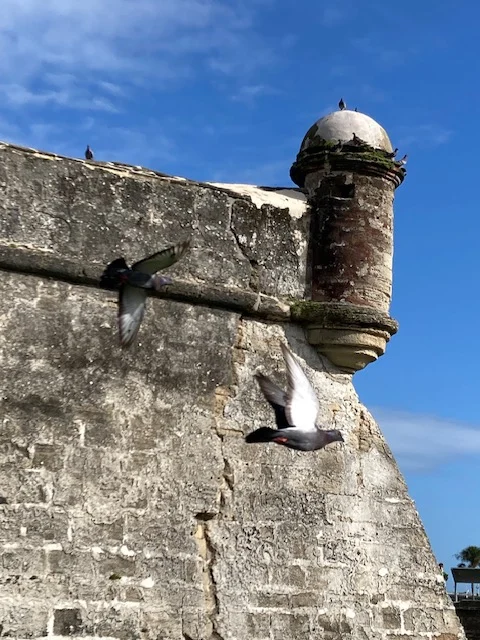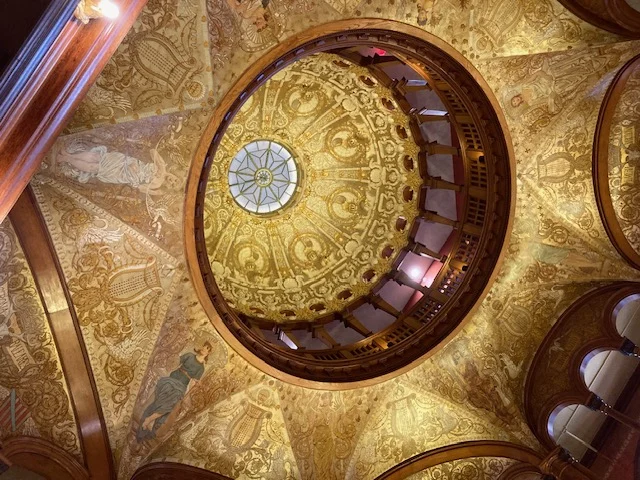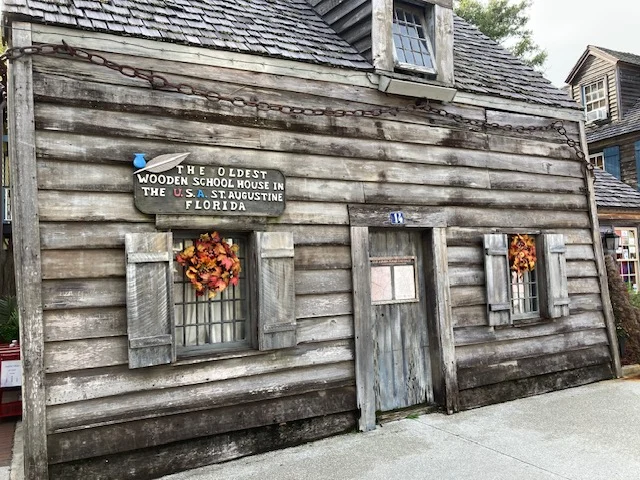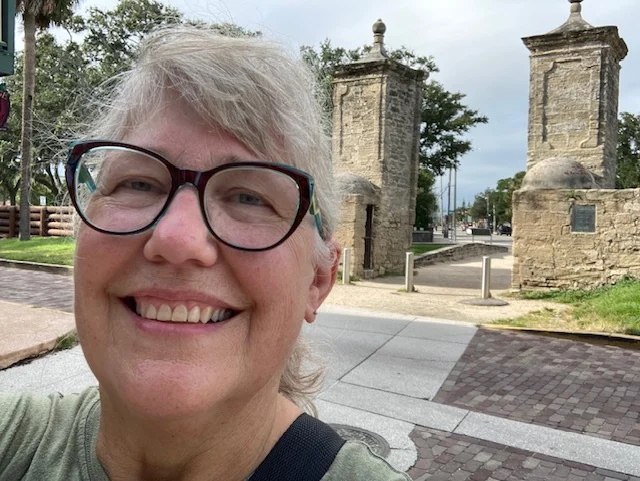
While St. Augustine is not the oldest city to exist in North America, it is North America’s oldest continuously occupied European-established settlement.
History always fascinates me. And the history continues to unfold. What is present today has been orchestrated by decisions of the past. St. Augustine, Florida, is what it is today because of choices made the last 460 years. And tomorrow, choices made today will be the future’s history.
I knew it was a city full of history, and tourism, but I really had no idea what to expect. I was blown away with the history of the area, and the structures that still remain! Buildings from the 1700s are still being used, and the history is being preserved and shared. I love learning, and history, and seeing things restored and used instead of demolished or thrown away.
The area was claimed for Spain by Juan Ponce de Leon during the Easter season in 1513. He named the new territory “La Florida” partly because of landing there during the “Feast of Flowers” and also because of the lush flowering vegetation. I found it interesting that to claim new territory at the time, all one had to do was post the country’s flag and say a specific verse. What an interesting way to be able to claim land you consider beautiful or full of resources.
The city of St. Augustine was founded 52 years later in 1565 by Pedro Menendez de Aviles, and it became the capital of Spanish Florida. Though claimed by Spain, it faced numerous conflicts with other European powers and pirates. At one time, the British plundered the city and burned much of it. In 1672 Spain began the process of constructing the Castillo de San Marcos, a fort to protect the city, which took 23 years to build. A wall also was built to protect the city, which included the city gate that was built in 1808. The gate still stands, and part of the wall was reconstructed to show how it was built.
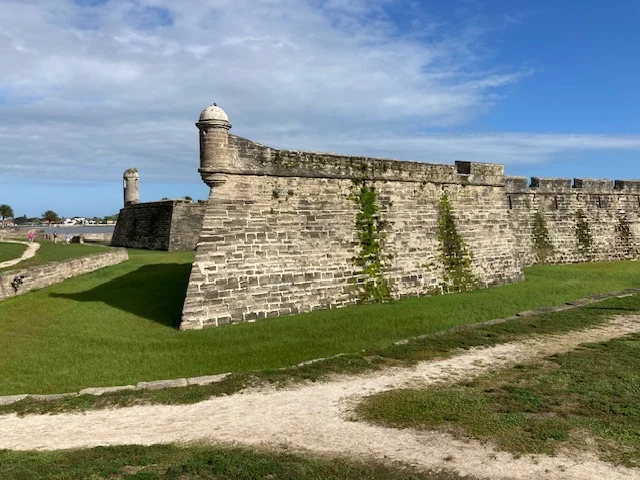
The British did have control of the city for a short period of about 20 years, but once they were chased out of the Eastern colonies, Spain moved back in, and regained control in 1784. Florida remained under Spain until it was ceded to the United States in 1821. Many of the buildings along the narrow pedestrian-only St. George Street, which runs along the original colonial road bed, date back to the 1700s.
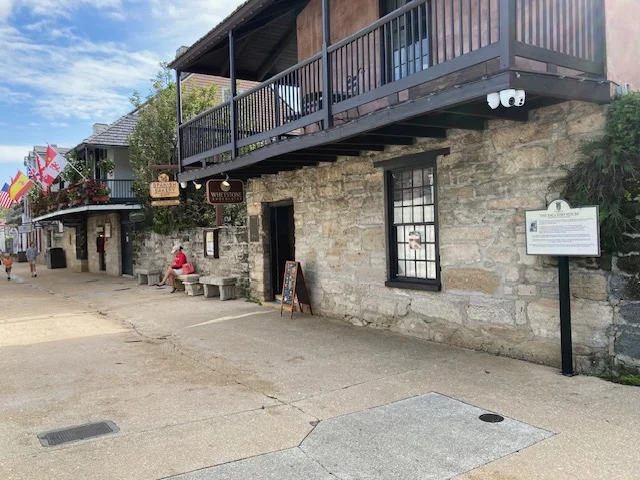
There are 460 years of history to unravel in that one community! It’s hard to put it all in here, especially since I learned so much! Like the first free black settlement in what would become the U.S. was Fort Mose, a community established just north of St. Augustine in 1738. A Florida State Park, with a reconstruction of the fort, now exists on the site to honor its legacy. I had heard that the first free black community was in Florida, but had no idea where it was located.
Or that Henry Flagler, a railroad magnet and a co-founder of Standard Oil with John D. Rockefeller, was instrumental in creating the tourism industry in St. Augustine and along the Florida Keys. He built two hotels in St. Augustine, the Hotel Alcazar and the Hotel Ponce de Leon, in the 1880s, and both buildings are currently being used. The Alcazar is now the Lightner Museum, and the Hotel Ponce de Leon now serves as the Flagler College. I had the opportunity to visit both the museum and the entrance to the Flagler College.
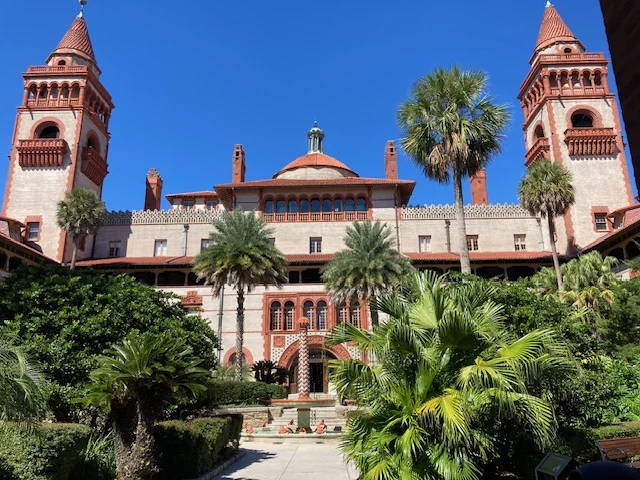
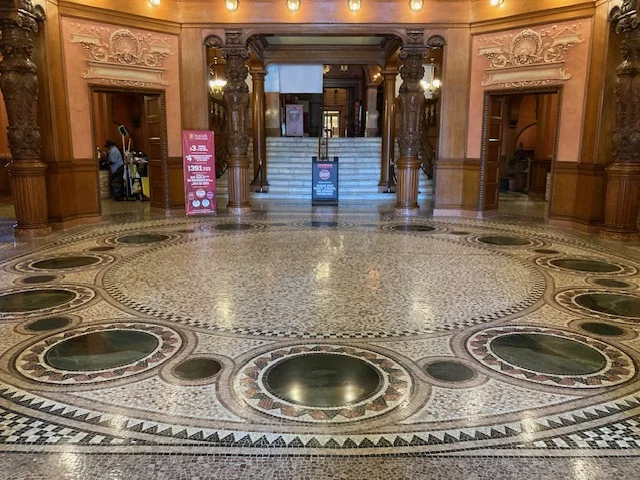
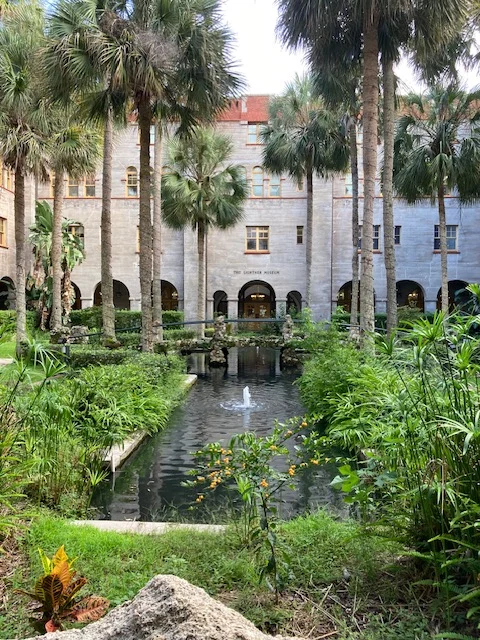
Or that the first Catholic parish in what is now the U.S. was in St. Augustine, and many other parishes in Florida were started from there. Or that Flagler also worked with the city to construct protestant churches, including the Memorial Presbyterian Church, which he built as a memorial to his daughter and her newborn baby that died in childbirth.
Another icon of the area is the St. Augustine Lighthouse and Maritime Museum. The lighthouse is actually the third one constructed, with the first being a wooden watchtower built by Spain in the late 1500s with the goal of protecting the settlement from seafaring invaders and directing Spanish ships and traders to the St. Augustine port. It was burned down in 1586 during an attack, and a new tower was constructed on the site from the ruins of a stone chapel in 1683. That one lasted 200 years, falling to shoreline erosion in 1880. Knowing the shoreline was eroding and anticipating the tower’s demise, a new lighthouse tower was constructed further inland in 1874, six years before the previous one fell into the ocean. It still stands, and is the oldest surviving brick structure in St. Augustine.
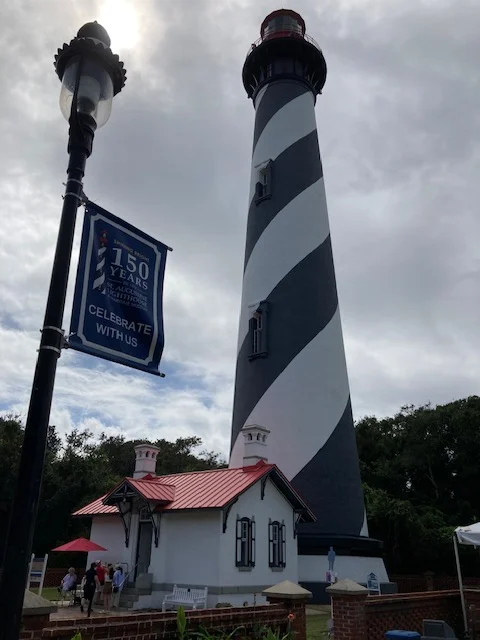
There are 219 stairs to climb to the top of the lighthouse. I made it up there, and the view was incredible!
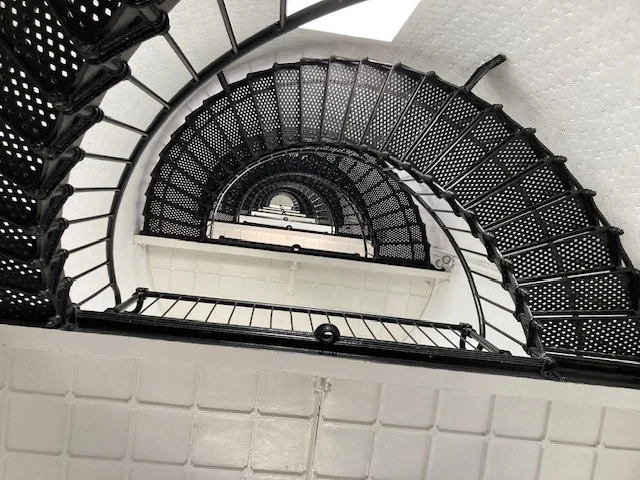
The history of St. Augustine also includes notable civil rights actions that I did not know about. Granted, I was pretty young in the 1960s, so I saw a lot of what was going on without understanding all of the issues and ramifications. While on the history tour tram, we drove by the first black established churches in St. Augustine where Martin Luther King Jr. spoke and were told about the marches and protests against segregation that took place in St. Augustine. We also heard a portion of one of the speeches he gave.
I know there is a lot of information in here, more than a lot of you really want to know. I had so much fun investigating the rich history and architectural beauty in the city! The opulent architecture of the hotels reminds of the axiom “make all things of necessity beautiful”. There is beauty even in the simple structures along St. George Street. Sometimes, I feel like we have moved away from constructing things for beauty as well as function, to constructing only for function. I don’t know if that is good or bad, but I do know that when i see beauty, gratitude usually follows.
